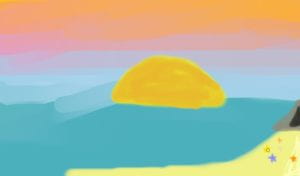
Angel – Kleki
- Author By gisangelm
- Publication date November 13, 2024
- Categories: Hanga | Create
- No Comments on Angel – Kleki
| LIVING ORGANISMS VOCABULARY TASK | |
| Your task is to find the definition of the word and find a picture/diagram to help you understand what it is. You might want to use this dictionary, or you may need to do more research. The first one is done for you 🙂 | |
|
Anything that has life and consists of cells as its basic unit of organisation. Examples of living organisms include humans, fungi, algae, trees, animals, bacteria, protozoa, and insects. |
|
An object or something that doesn’t breathe air |
|
A quality or trait that makes a person, thing or contingent different. |
|
The act or process of dividing things into groups according to their type. |
|
Cells are the basic building blocks of all living things. |
|
A place where organisms call home |
|
The different kinds of life you’ll find in one area. |
|
A specific area where living organisms could be found |
|
To make or become something suitable |
|
A person (/living organism) that consumes a product or service. |
|
A plant or algae that can produce its own food for itself by the heat from the sun. |
|
Organisms that break down dead organic material |
|
A series of organisms that eat one another so that energy and nutrients flow from one to next |
|
A meat eater |
|
An animal that eats only plants |
|
An animal that eats both plants and meat |
|
A pigment that gives plants their colour and helps the plants function through photosynthesis |
|
The process by which plants use sunlight, water and carbon dioxide to create oxygen energy and energy to form sugar |
|
An ancient supercontinent that incorporated present day South America, Africa, Arabia, Madagascar, India, Australia and antarctica |
|
An organism that is restricted or peculiar to a locality or region |
|
Refers to species that occur naturally in a given geographic area |
|
Those that have been moved by humans to an environment where they didn’t occur naturally |
|
Adversely affect the rich biodiversity on which life depends |
|
Protection and derive sustainable benefits for present and future generation |

Today I learnt about Etiquette tips, which was using proper english and re-reading my work before posting.